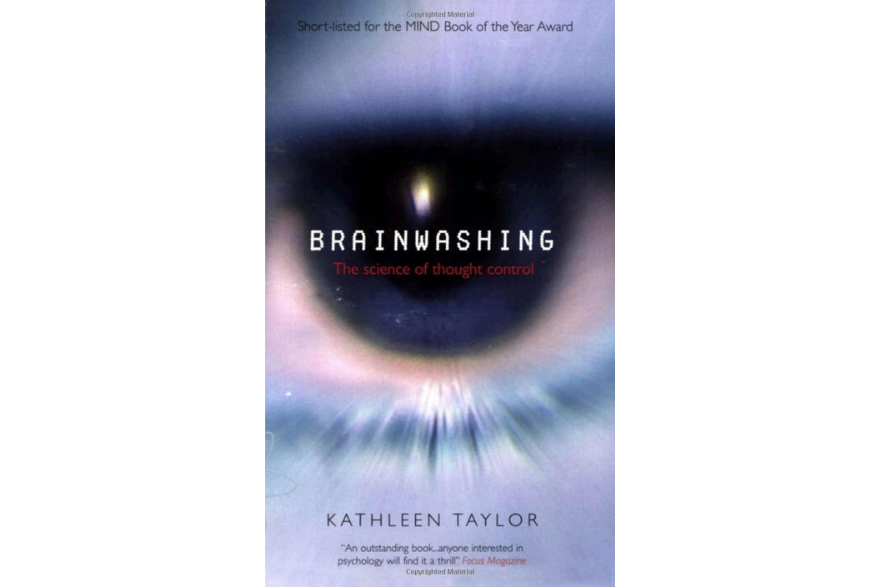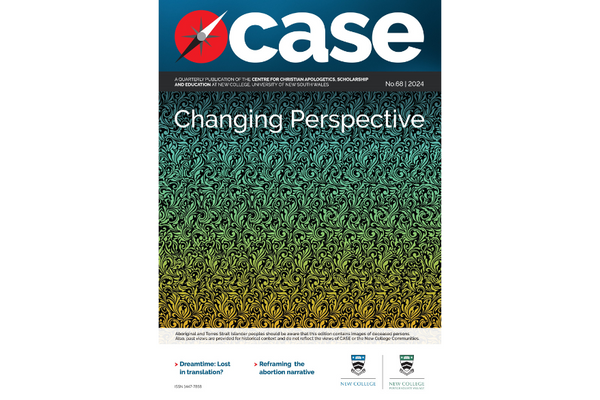Book Review – Manufacturing Belief

I read George Orwell’s Nineteen Eighty-Four as a teen, and I have to confess that I was devastated when Winston declared his love for Big Brother. I had no idea it was coming. I firmly believed that Winston’s strong, independent spirit would withstand the state’s attempts to control him— that his would be a story of hope, the individual standing up against the evil state—and I vividly remember being overwhelmed with despair when, instead, he succumbed, heart and soul. The scene was all the more powerful because Winston didn’t see himself as defeated, but as overcoming the enemy of his own rebelliousness: ‘He had won the victory over himself’. The images surrounding his surrender were of healing, walking in the sunshine, purity—‘his soul white as snow’.[1]
Kathleen Taylor’s fascinating (and often disturbing) book, Brainwashing: The science of mind control, sets out to investigate the terrifying idea that someone could change our beliefs— and even who we are—against our wills. She acknowledges up front that the idea has almost bogey-man-like qualities—it inspires fear, is vague and largely unknown, and some believe it has no basis in reality and only belongs in scary stories. It is sometimes used as a casual pejorative for any unwanted influence attempt, or as a ‘concept of last resort, a screen pulled across to hide the abyss of our ignorance’ (p9) to make it appear that we understand what is going on when in fact, we have no explanation. Is it real? And if so, what is it, and how does it work, and can we protect ourselves against it? These are all questions Taylor addresses. While admitting that there is still much that is not understood, the book does leave the reader with a greater understanding of what is going on in situations described as ‘brainwashing’ and how unwanted influence might be counteracted.
Orwell published Nineteen Eighty-Four with its account of Winston’s ‘conversion’ to Big Brother in 1949. One year later, the term ‘brainwashing’ was first introduced into English by Edward Hunter as a way of accounting for the (inexplicable) conversion of American POWs to communist principles during the Korean War—a conversion that for some, as for Winston, persisted after their release (p3-4). Since then, the term has been applied to other political contexts, especially to totalitarian regimes seeking a high level of control over their citizens. But it is also applied to a wider variety of situations where persuasion, conversion, or unquestioning obedience is desirable.
The first part of Brainwashing, ‘Torture and seduction’, looks at the characteristics of brainwashing and its history, including a number of case studies. Cults are discussed in some detail, and in that context, the social psychology of groups. There are also sections on advertising and the media, education and ideology, psychiatry (healing false beliefs), the military, criminal justice (reforming unacceptable beliefs and behaviour), domestic abuse and torture. The ‘persuasive’ elements of all these contexts are discussed, and whether they qualify as brainwashing.
Taylor’s considered view is that brainwashing—an attempt to alter our beliefs without our consent—can and does happen, but that it is not a single process. Rather it covers any of a wide range of methods of deliberate ‘mind-control’, which fall into one of two broad categories: coercion, or stealth. All brainwashers (or ‘influence technicians’, in Taylor’s phrase) have to deal with the problem of the victim’s resistance to unwanted influence, and the options are either to overcome it by force, or to attempt to sneak past it by ensuring the victim does not become aware that they are being manipulated.
The force employed may include physical coercion such drugs or torture; social coercions such as verbal abuse, humiliation, isolation or lack of privacy; and psychological coercion such as terror, sensory deprivation, and repetition of propaganda. These are lifted when the victim shows signs of relenting, so that the positive feelings of relief arising from their removal is associated with the new beliefs.
Brainwashing by stealth or deception relies on the victim not realising they are being manipulated. It includes the kinds of influence methods used by advertisers or charismatic leaders: authoritatively presented simple black-and-white messages, denigration of out-groups, isolation from alternative views, and not allowing people time or resources to evaluate information.
Brainwashing ‘by force is faster, more intensive… brainwashing by stealth, is slower, less intensive, and relies on its efforts going largely unnoticed’ (p302). Whatever the method, the new beliefs of brainwashing victims are often very different from their original beliefs— and sometimes bizarre relative to mainstream beliefs—and the change occurs in a relatively short time frame. They are often held with passionate conviction, and are not open to rational challenge (pp11f).
These processes are excessive, but not magical or even particularly mysterious. Instead, Taylor sees brainwashing as ‘an extreme form of social influence which uses mechanisms increasingly studied and understood by social psychologists’, and that ‘such influence can vary hugely in its intensity’ (ppix-x). Indeed, it is not hard to find self-help books that teach you how to influence others (e.g. Dale Carnegie’s 1937 classic How to win friends and influence people, or the more recent, research-based Influence: The psychology of persuasion by social psychologist, Robert Cialdini).[2] These may not recommend going to the extremes a brainwasher is willing to go to, but many of the same principles apply.
The book also delves into philosophy: ideas of self-hood, free will[3] and responsibility (am I responsible for my behaviour if I’ve been brainwashed?). One recurring theme is that the popular idea of the ‘self’ as something fixed and stable is false: instead people are ‘more like clay than diamond: malleable, interconnected, and dependent on physical reality, particularly the physical reality of the brain’ (p100). This is important for how we conceive of what is going on in brainwashing: if we think of the self as fixed, we will see brainwashing as destroying the person; if we think of it as malleable, the person merely changes.
The focus of Part 2 of the book is the brain. It takes a brief look at the neuroscience of how beliefs are formed and changed, the idea of webs of beliefs (‘cogwebs’) and what makes them strong or weak, and how all this interacts with memory, emotion, and critical thinking. At times this section is heavy going, at others a little tedious, but Taylor makes an effort to make it accessible to the non-specialist reader, and it is worth the effort to better understand the neural bases of how and why influence techniques work.
Part 3, ‘Freedom and control’, asks further important questions: Why are some people more susceptible to brainwashing than others? Is mass mind control possible? Are there further threats in new technologies? and How can the threat and danger of brainwashing be minimised? By this point in the book, this last question is particularly pertinent. Taylor acknowledges that some people are simply more susceptible to stress, emotion, and therefore influence attempts than others, and that these characteristics are not easily altered. However, happily, she does have advice for how we can protect ourselves from unwanted influence.
Given how beliefs are formed and changed, people gain some protection simply by having a lot of cogwebs. Holding beliefs with conviction also helps—by ‘making sure that we are clear about our own beliefs, we reduce the chances that they can be modified with or without our knowledge’ (p251). Well-grounded beliefs will better survive being attacked, questioned or mocked. These two features of our mind-scapes—the quality and quantity of our beliefs—are things we can proactively improve through education, wide life experience and creativity, and passively improve with age. Finally, understanding how influence attempts operate can help us recognise them and trigger a ‘stop and think’ strategy:[4]
Critical thinking, scepticism, and humour are all examples of stop-and-think reactions. Critical thinking and scepticism analyse the message, checking the logic of its arguments, the use of emotive language, the accuracy of its factual statements. They also query the authority and motive of the message’s source. Humour also challenges authority, albeit by emphasizing emotion rather than argument. (p250)
Brainwashing and Christianity
The term ‘brainwashing’ is applied to persuasion attempts that are unwanted, and usually made for reasons other than the best interests of the person being persuaded. However not all attempts at influence have the ulterior motive of removing opposition to a political authority, boosting sales figures, or feeding megalomania. Many are aimed at the good of the influencee. Here, of course, we hit up against perspective. Whether you are the influencer or the influencee makes a huge difference to how an influence attempt is conceived: what US officials pejoratively called ‘brainwashing’, Chinese communists lauded as ‘thought reform’ (p5). Is Sunday School a forum for setting young feet on the path to righteousness, or the forced indoctrination of naïve minds? Is seeking to change the thought patterns of a depressed person providing healing, or arrogant and intrusive?
Anyone in the business of persuading others will probably feel uncomfortable at times reading this book, and Christians fall into that category. History exacerbates this discomfort—there have been times when those professing Christ have ‘converted’ people by coercion. How brainwashers describe their influence attempts can disturbingly echo Christian phrases such as ‘getting rid of impure thoughts’, ‘renewing the mind’, ‘cleansing consciences’, ‘putting off the old self and putting on the new’. There is no getting away from the fact that Christians seek to convert people to a new way of thinking, one that is different from the way the world in general thinks, and that Christians see the world in terms of an in-group (the saved, who are washed and pure) and an out-group (the perishing, who are corrupt, blind to the truth and remain in their sin). To make matters worse, Christians think there is a limit to where critical thinking can and should go (Proverbs exhorts us, ‘lean not on your own understanding’ but trust God;[5] Job is taken to task for questioning God’s justice;[6] questioning of Christian authorities is sometimes condemned as faithlessness) and this can look like an attempt to prevent questions.
This discomfort is, I think, healthy. It should goad Christians to think carefully both about how they influence others and are themselves influenced. The following are a few ideas from my reflections on reading Taylor’s book.
When seeking to persuade others:
- Don’t employ coercion, deception or seek to manipulate people. In the case of evangelism, the task of the evangelist is to make a persuasive case, not guarantee conversion.
- Don’t seek to isolate people from family or friends, or the mainstream community, or from sources of information other than those you are providing.
- Allow people time to think and evaluate; don’t discourage questions.
- Keep Christianity firmly rooted in the real world: that Jesus lived in human history, that the Bible is a collection of historical documents, the history of the church (warts and all!), the love and care Christians show for people in the community, both in the past and now.
- Evangelise only out of love for God and concern for other people, not from motives of legalism, power, in-group approbation, and so on.
Rather, we have renounced secret and shameful ways; we do not use deception, nor do we distort the word of God. On the contrary, by setting forth the truth plainly we commend ourselves to everyone’s conscience in the sight of God. And even if our gospel is veiled, it is veiled to those who are perishing. The god of this age has blinded the minds of unbelievers, so that they cannot see the light of the gospel that displays the glory of Christ, who is the image of God. For what we preach is not ourselves, but Jesus Christ as Lord and ourselves as your servants for Jesus’ sake. (2 Cor 4:2-5)
Taylor’s principles for standing firm against deceptive or coercive influence are also useful for Christians. One possibility is to isolate yourself from all out-group information or interactions (employing a self-imposed brainwashing technique), but this is not very practical, nor would it help if you were forced into a position where you did not control your environment. A more robust strategy would be to:
- Know what you believe and what grounds you have for believing it. Be familiar with opposing arguments; engage with and respond to their strongest forms, not mere ‘straw man’ versions.
- Keep your Christian cogwebs active and growing. Meet with other Christians regularly, but don’t restrict yourself to ‘in-group’ perspective, information and interaction.
- Integrate your Christianity into every aspect of life—don’t keep your ‘Christian beliefs’ compartmentalised from your other beliefs about life and the world (work, current affairs, education, science, relationships etc.). The better integrated your cogwebs the better any of them can withstand attack whether by the slow drip of opposing cultural messages or something more forceful.
- Be aware of the kinds of influence pressures you might be facing (in-group/out-group dynamics, effects of stereotypes, etc.). Test and/or avoid any that appear manipulative or coercive.
There is one aspect of Taylor’s approach to defence against the dark arts of brainwashing that Christians must treat with particular care, and that is how authority is approached. Consider the following quotation:
One of the most poisonous ethereal ideas in human history is the concept of an absolute authority which overrides all other moral or legal considerations. Whether the authority cited is God or The Party, Science or Truth or The State, this particular ethereal idea has been used, and is still being used today, to justify some truly disgusting atrocities. (p253)
The story of brainwashing is largely a story of abusing authority, and some brainwashers have claimed to have divine authority. I imagine the response of most Christians to the cases Taylor describes would be the same as mine: to deny that these claims actually had God’s authority behind them. Taylor, an atheist, sees the solution as rejecting any claim of absolute, unquestionable, authority, and any religion or ideology that relies on such authority. All authority must be open to examination and questioning. This recommendation is ‘compatible with certain interpretations of the major world religions’ but those ‘which are incompatible should be reinterpreted or ditched’ (p266).
Christians cannot be so cavalier: what if the God they profess is there, and does have authority over them? Isn’t it then right that they unquestioningly obey this God who is worthy of honour not only because he is powerful, but because he is trustworthy and just and merciful?
Here it is important to distinguish between claims to authority, and authority itself. Taylor is certainly right to urge that claims to divine authority be tested (cf. 1 Jn 4:1), particularly if what is to be believed or done on God’s authority appears harmful or ‘out of character’ for God. Christians should test the claim against all else they know of God’s character and plans in the Bible, not to mention critically evaluating how and why the claimant came to believe God had given them a special message or task.
However unlike Taylor, Christians draw a line at questioning God himself: if God said something, the Christian should believe or do what he said. Trust in God is considered a Christian virtue, not a failing. The guiding principle of the Christian is not to retain autonomy no matter what, but to love God and neighbour, however counter-cultural this is, until his kingdom comes and it becomes the cultural mainstream. ©
ENDNOTES
[1] http://ebooks.adelaide.edu.au/o/orwell/george/o79n/chapter3.6.html
[2] Dale Carnegie, How to win friends and influence people (Pocket Books, 1990); Robert Cialdini, Influence: The psychology of persuasion (HarperBusiness, 2006).
[3] Taylor follows Daniel Dennett’s compatibilist account of free will, determinism and responsibility (see ch 11).
[4] Taylor also takes this to the next level and looks at how a society may protect itself against the threat of brainwashing, by protecting the freedoms of the individual, promoting critical thinking within the society, and so on (pp256ff).
[5] Pr 3:5.
[6] Job 38-42.
Leave a comment
Comments will be approved before showing up.



